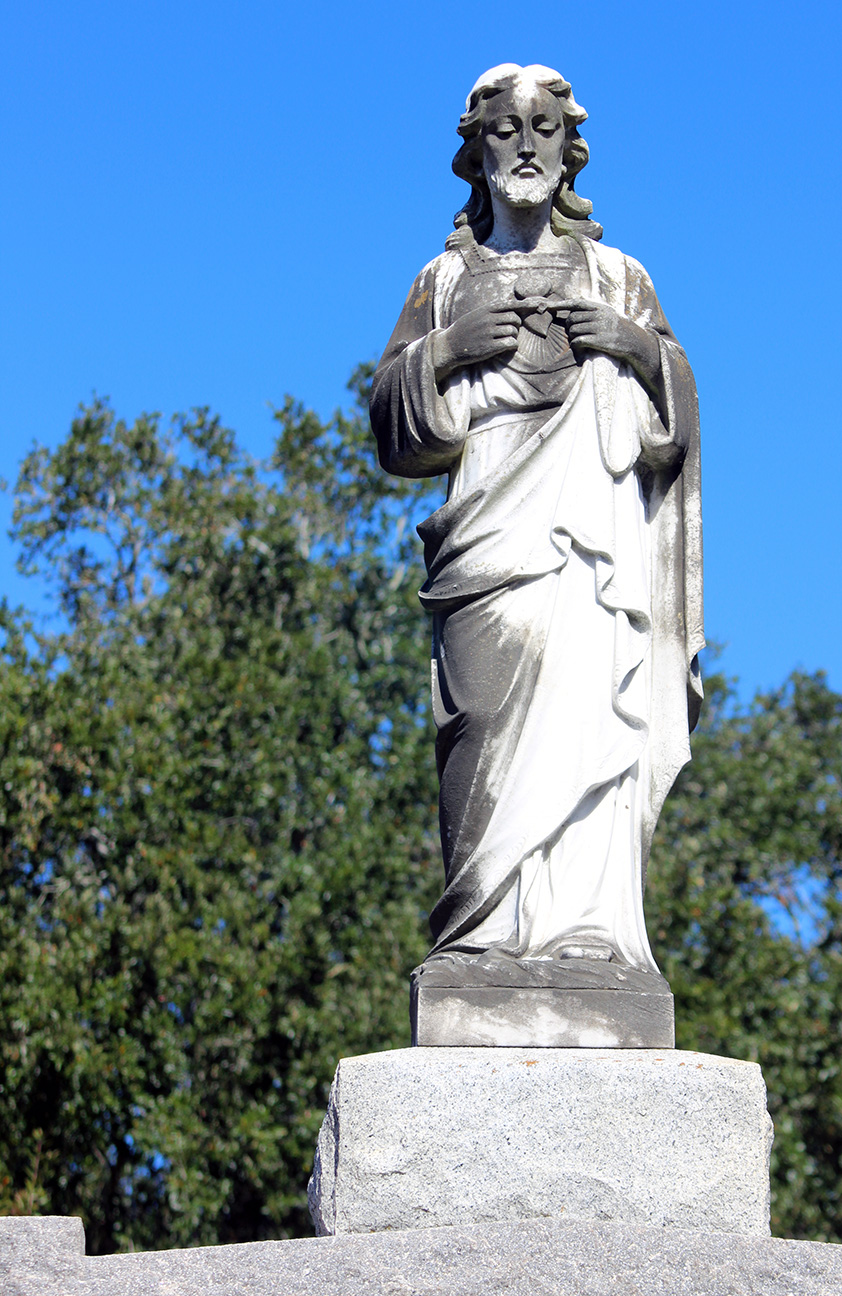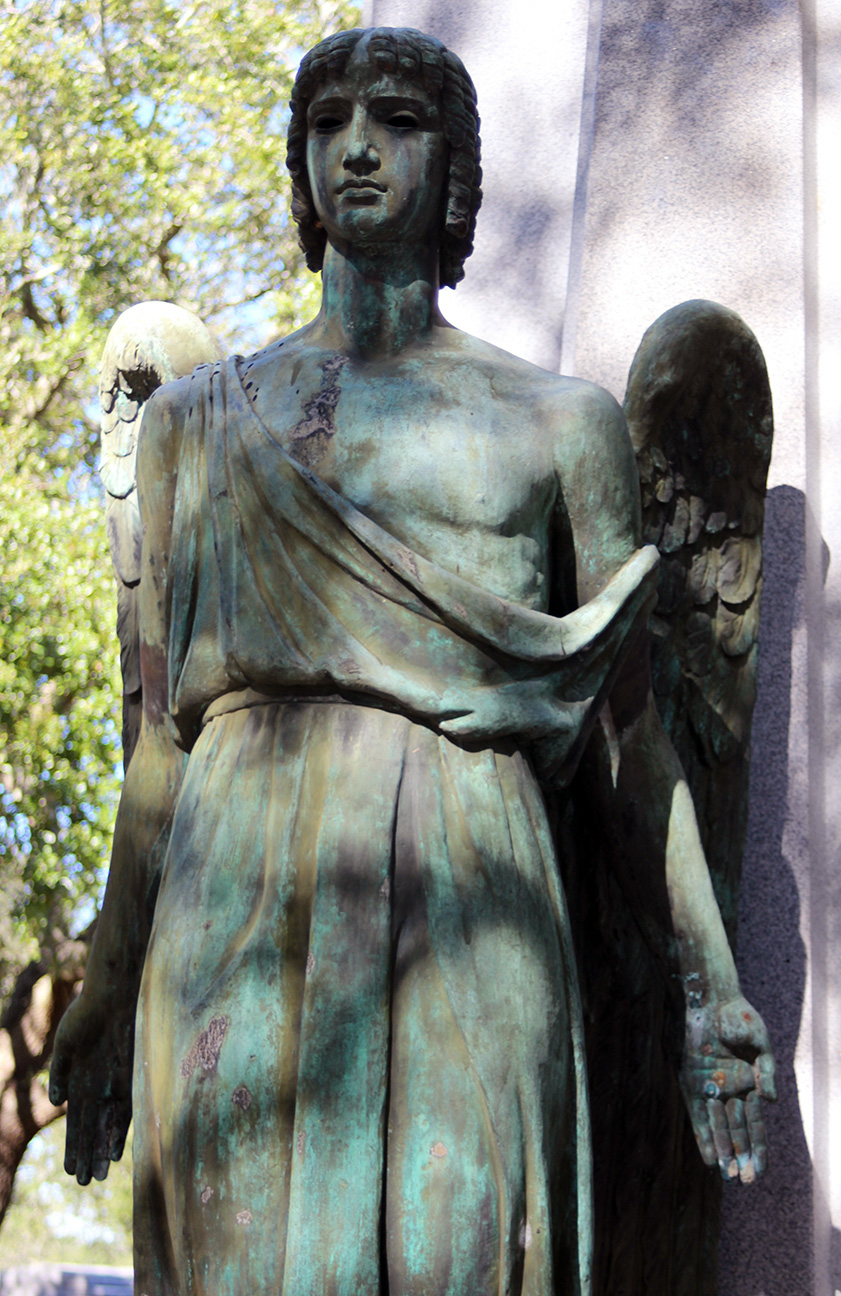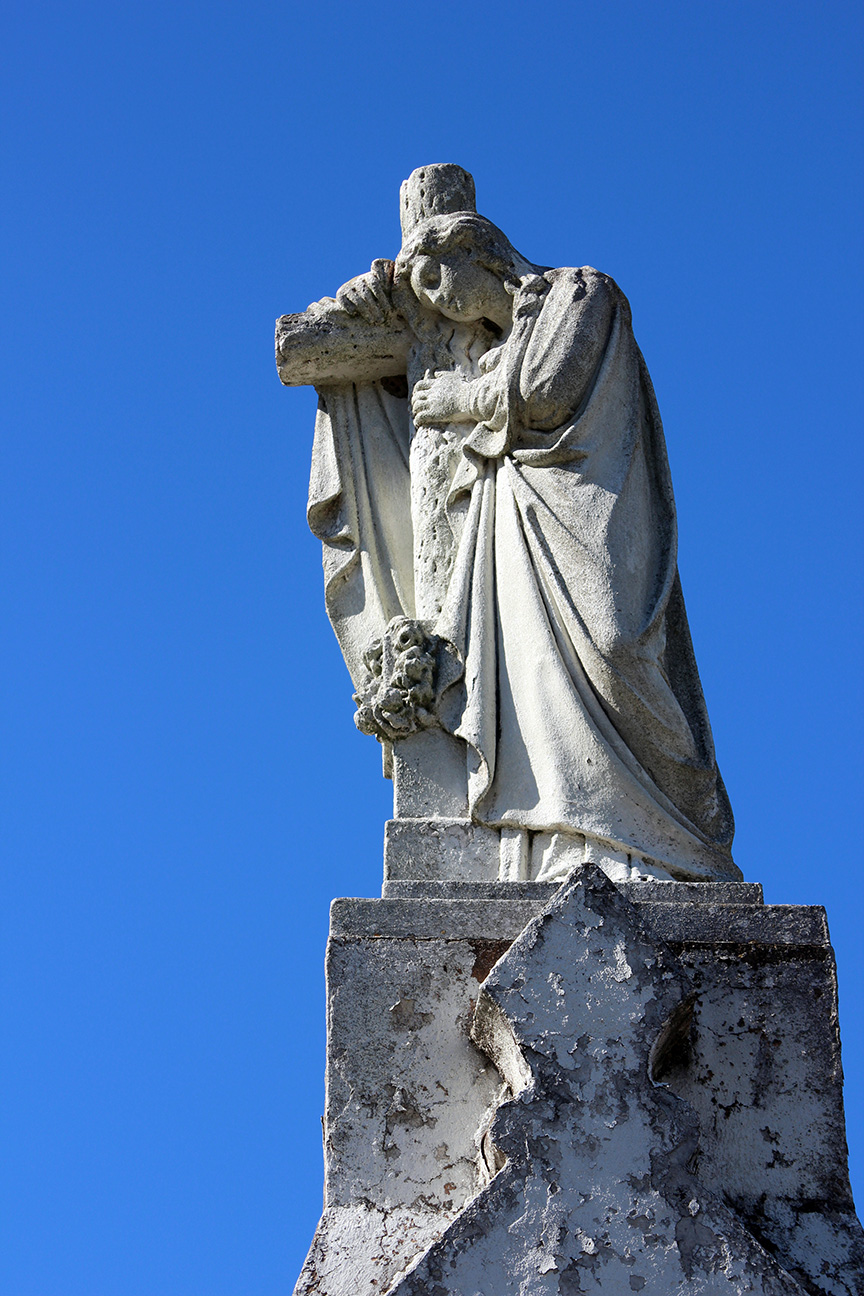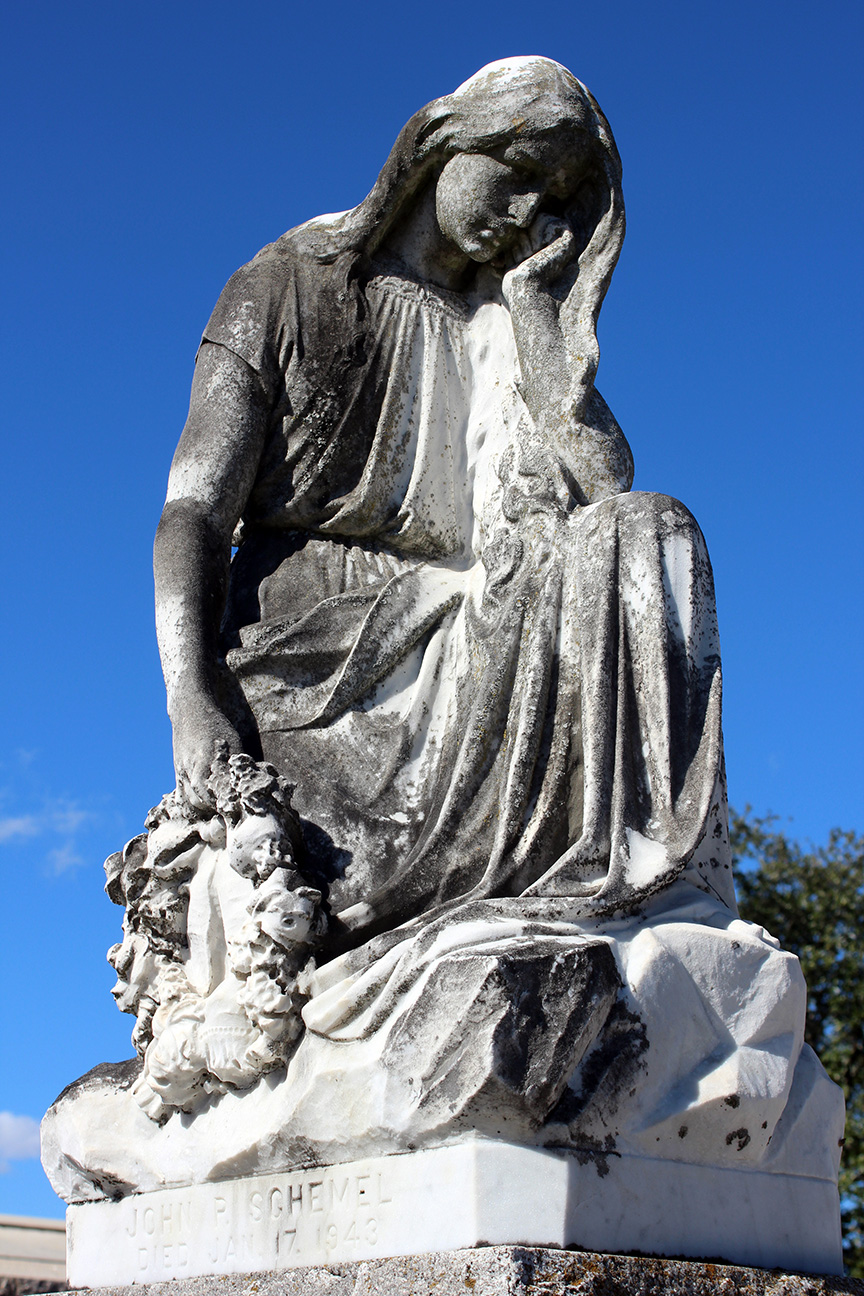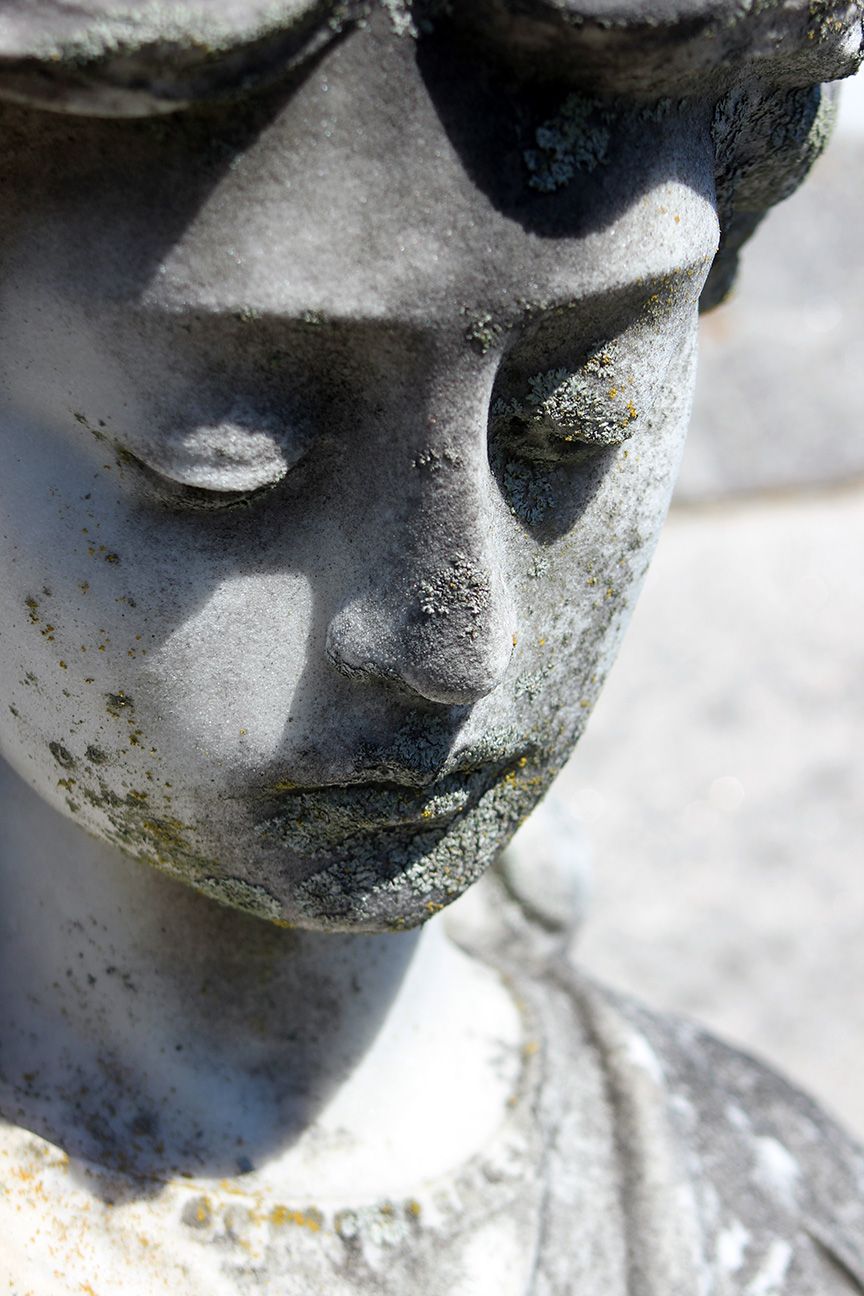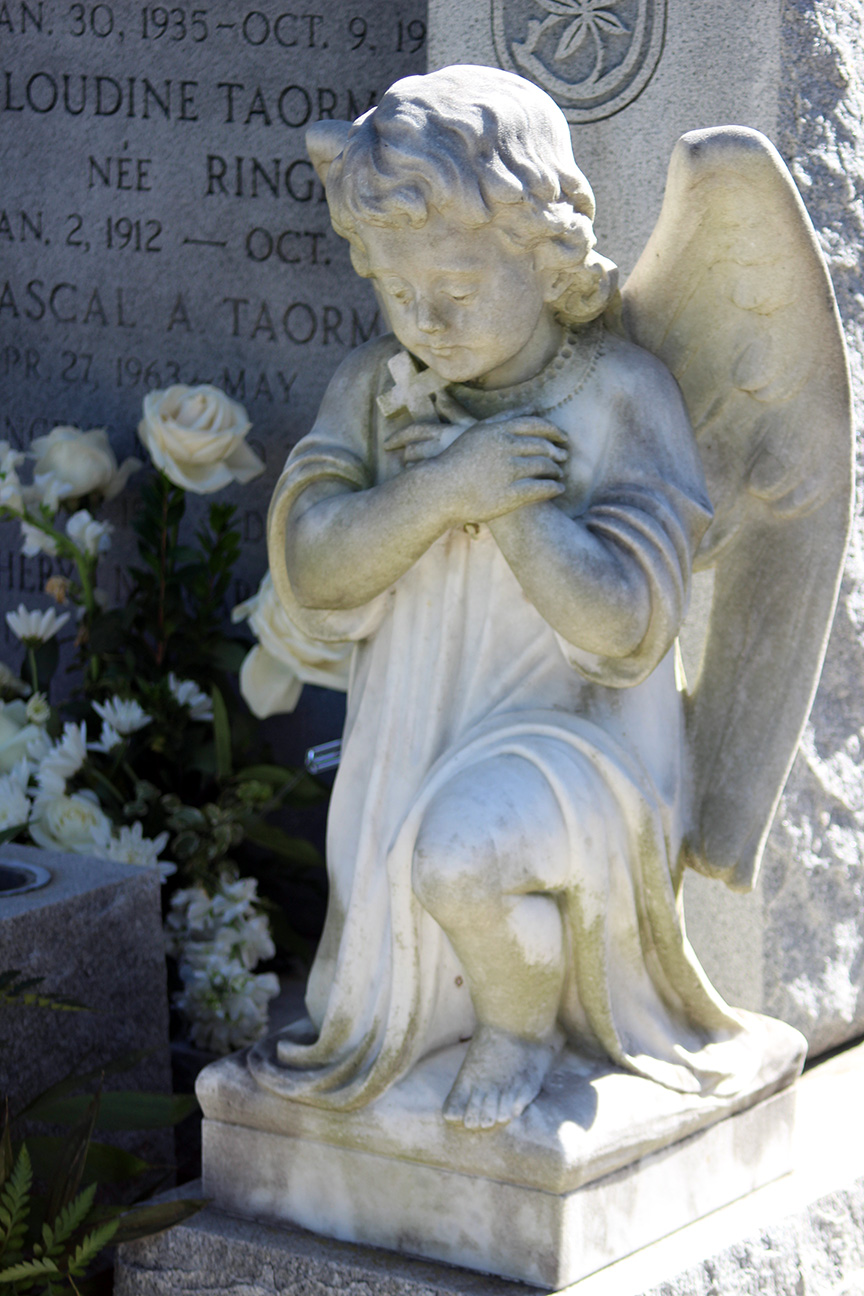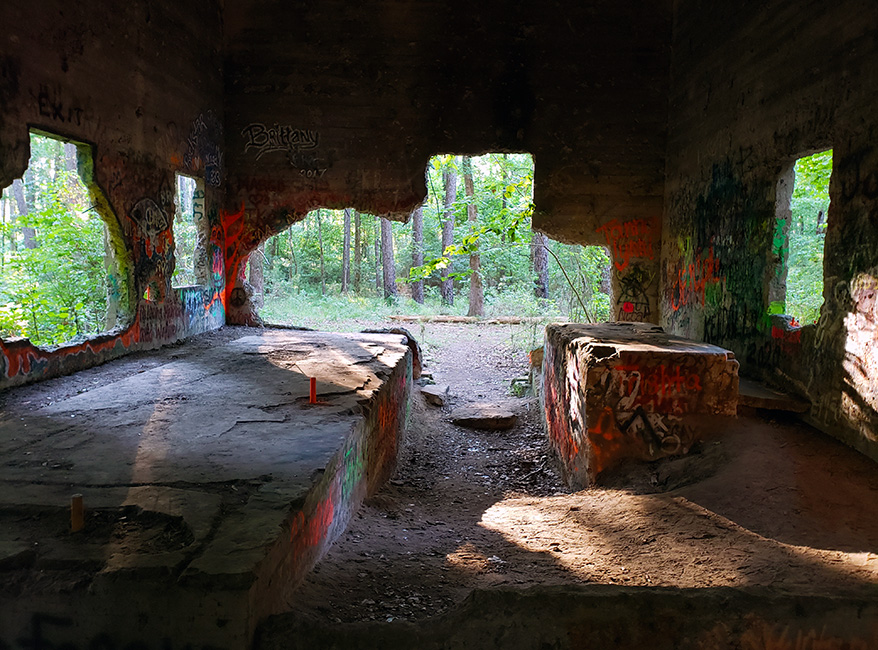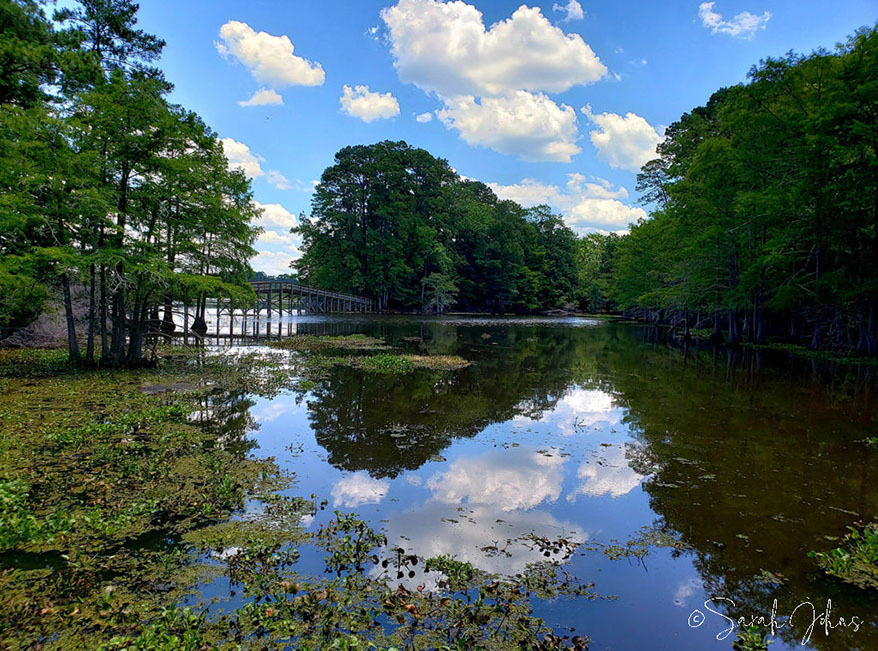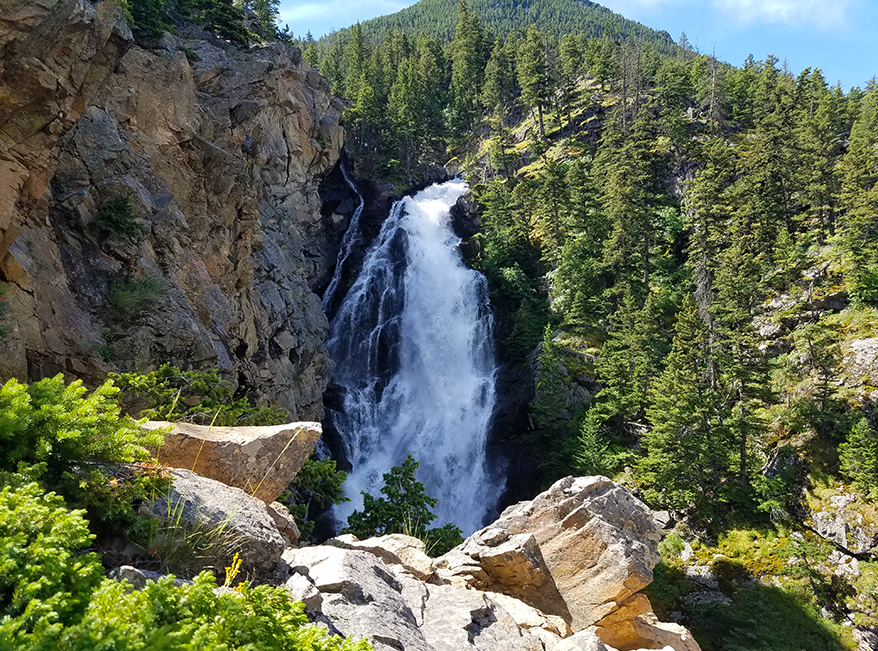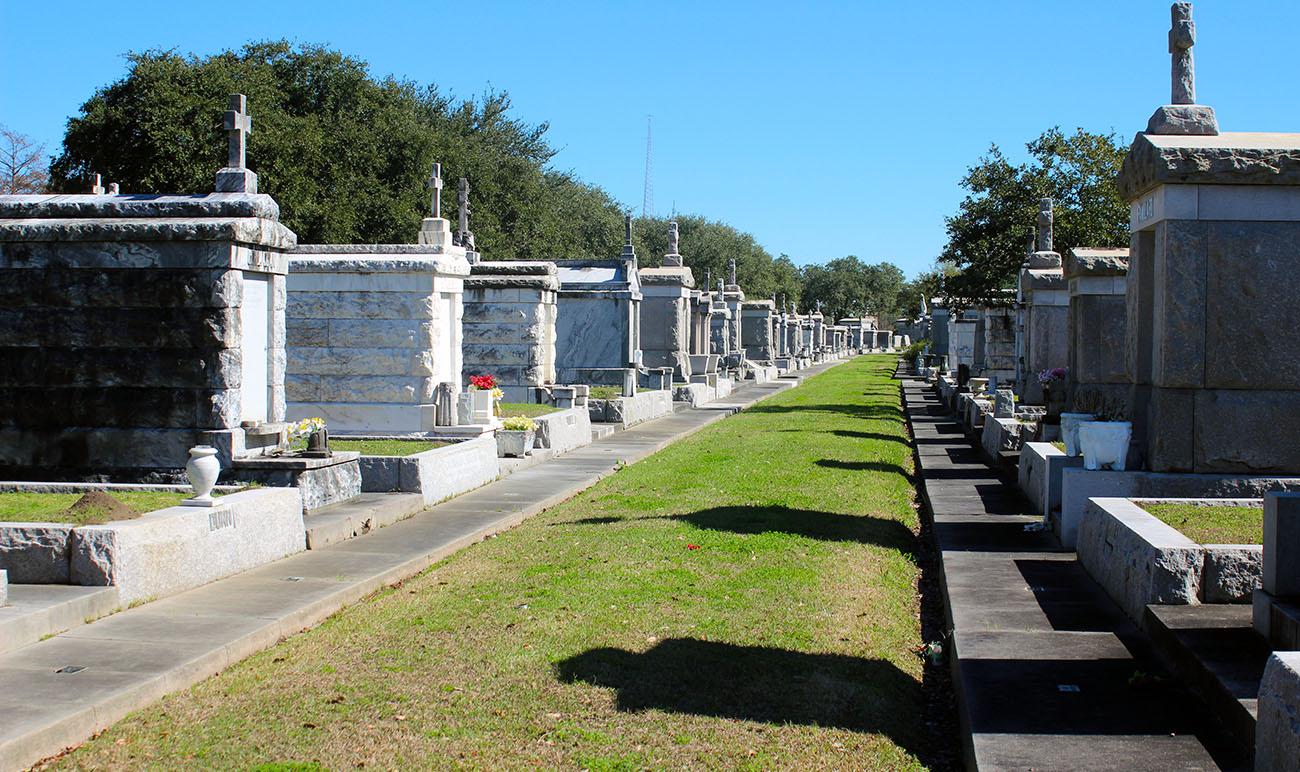
Metairie Cemetery, New Orleans
All cemeteries tell a story and I highly recommend witnessing the story of Metairie Cemetery.
New Orleans is a city known for its cemeteries, and I encourage adding Metairie Cemetery to your travel plans when you visit the area. Not only is it one of the most unique and beautiful cemeteries I have discovered, it’s also the most elaborate. The rich cultural history of the site and the significance of the area is something one must witness.
All cemeteries tell a story…
A Brief History

Founded in 1872 upon a 150-acre site used as a horse-racing track, Metairie Racecourse, the track dated back to 1838 and was the premiere racetrack of the South. Today, its oval racetrack is still present on the grounds. During the Civil War, the track went bankrupt and closed. The site then became an army training camp before they transformed it into a cemetery in 1872. In 1991, Metairie Cemetery entered the National Register of Historic Places.
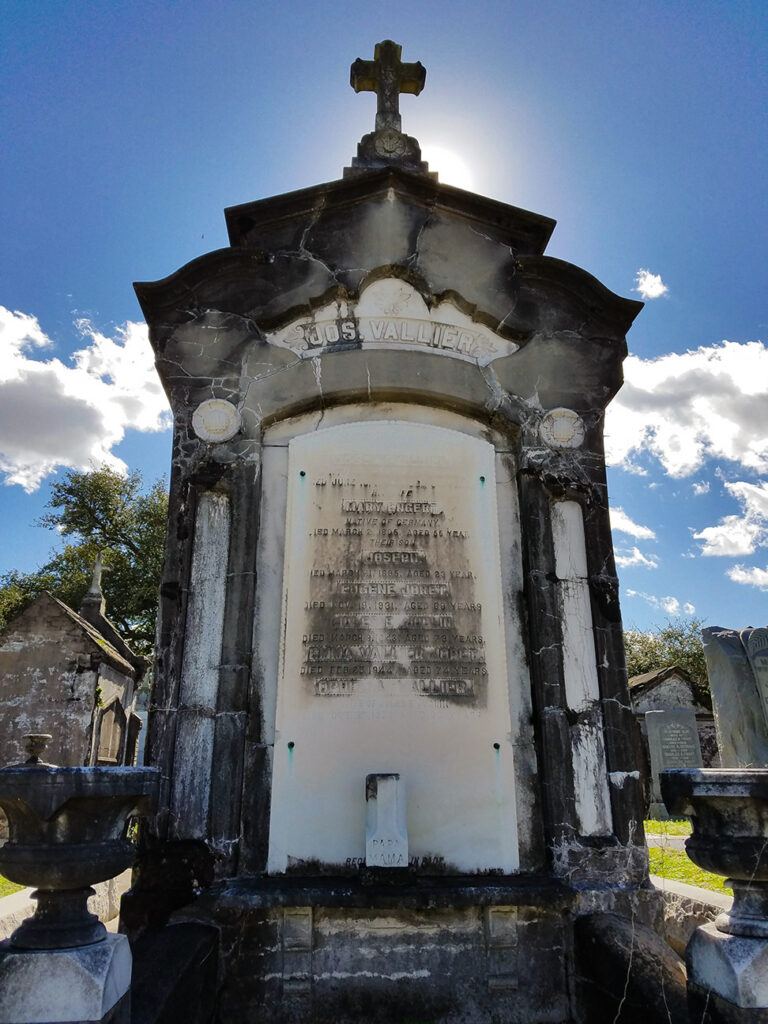
This historic cemetery is worth exploring. Known for its above-ground burials, touching memorials, monuments, and detailed stained glass, it’s an experience you don’t want to miss. In fact, the cemetery has the largest collection of elaborate marble tombs and funeral statuary in the city. One will discover unique and lavish tombs structured like Egyptian pyramids, castles, church ruins, magnificent mausoleums, and much more. In 2003, Forbes named Metairie Cemetery one of the 10 Most Interesting Cemeteries in the World for its unique historical significance and beauty.
The Cemetery
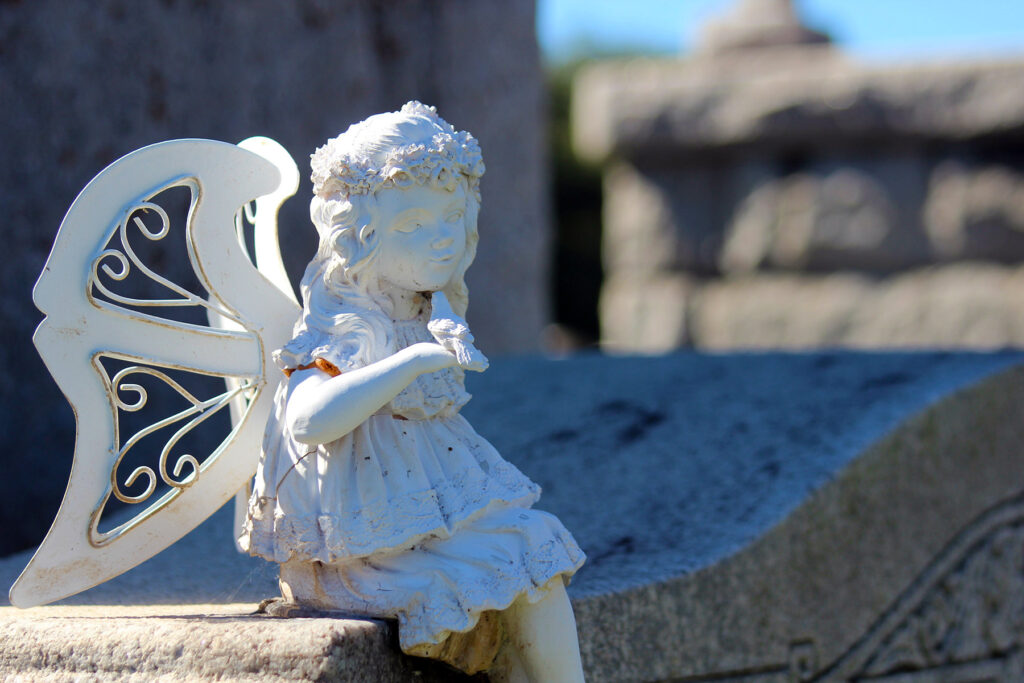
Metairie Cemetery includes both above-ground vaults and in-ground burials, and areas of open lawn scattered with beautiful trees. A long, narrow canal, lined with trees, offers a focal point in the site’s center.
The interior portion of the racetrack’s infield was sectioned off and sold to wealthy families in the community, and the elaborate and unique tombs built in that section became known as “Millionaire’s Row.” Graves from the less affluent families are found throughout the rest of the cemetery.
The Statues
Intriguing statues adorn the cemetery. The haunting, yet beautiful works of art evoke emotion, and each piece tells a story. From heart breaking grief to joy, these works of wonder represent a vast array our emotions during grief and loss. Take your time to study the art and symbolism of each piece. You’ll walk away with a sense of wonder.
There is much to learn from the history and the figures of Metairie Cemetery. It’s a fascinating area, and the quiet and the solitude make it an ideal place for reflection. We strolled throughout the grounds with only the sound of the crows and our thoughts.
On the 150-acre site, with over 8,000 tombs, one can spend days meandering through the grounds, viewing the architecture and artistry of the countless grave sites. The cemetery is enormous, so if time allows, schedule a good part of your day to wander through the sprawling cemetery. I do not recommend a rushed trip because there is much to discover.
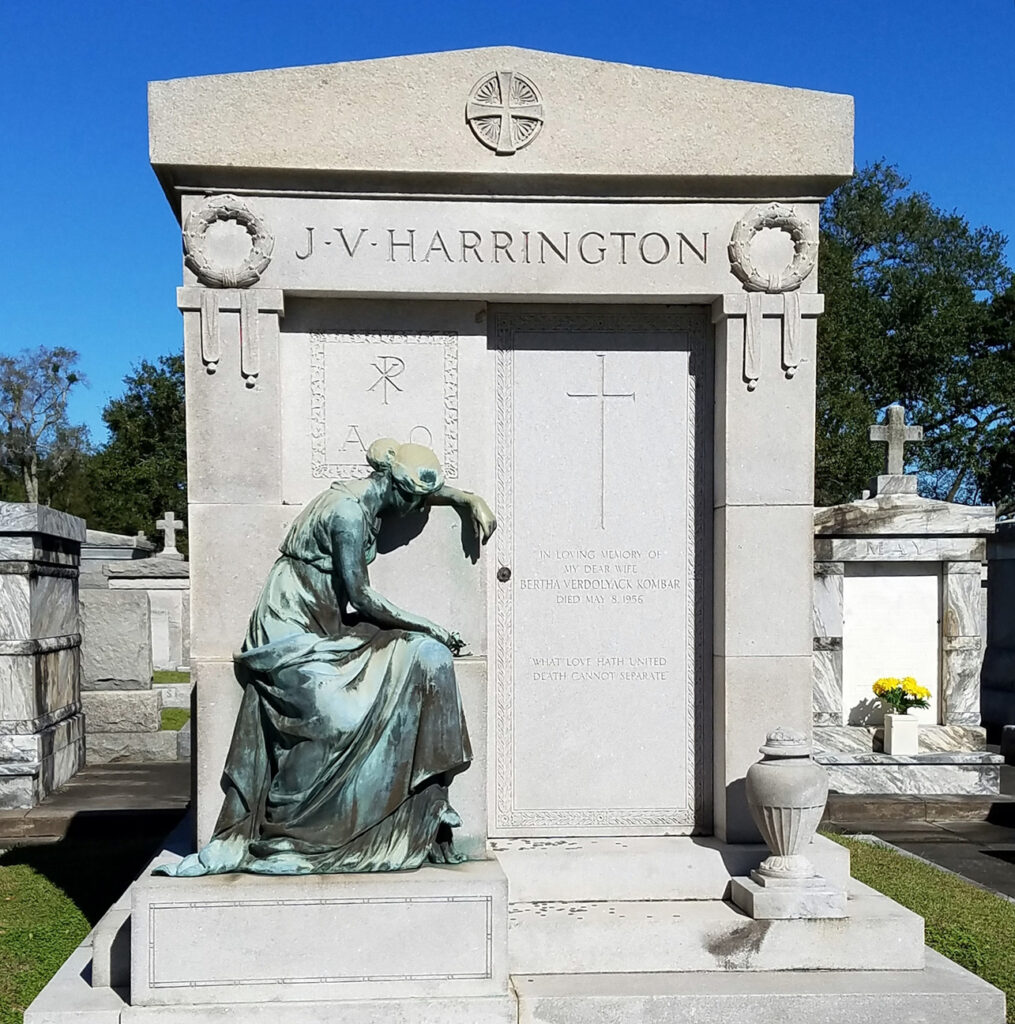
J.V. Harrington
J.V. Harrington, aka Never Smile Harrington, was a gambler well-known for his poker face. Mr. Harrington’s unique tomb features a bronze woman grieving in front of the tomb, laying a spray of roses at the entrance.
In July 1924, after having a good night, he headed to his home on Constance Street. Men gunned him down in his car as he drove home, then he crashed into a utility pole, killing him. The judge handling the estate refused to grant payment for the tomb, citing it was not commensurate with the estate size. However, that did not stop the construction of the tomb. His widow mysteriously paid for it in cash.
Famous Memorials in Metairie Cemetery
- Eve Curie — d. Oct. 22, 2007; the daughter of famous scientist Marie Curie.
- Dorothy Dix — d. December 16, 1951; Newspaper Columnist.
- Jefferson Davis — d. Dec. 6, 1889; the president of the Confederate States of America (Davis’ remains were later transferred to Richmond, Virginia, but the tombstone remains.)
- Stan Rice — d. December 9, 2002; Author, Poet, Artist. He was the husband of author Anne Rice.
- Alvin Copeland — d. March 23, 2008; created Popeye’s Chicken and Biscuits.
- Thomas Milton “Tom” Benson — d. March 15, 2018; Sports Magnate. He was the owner of both the National Football League’s New Orleans Saints and the National Basketball Association’s New Orleans Pelicans.
For a full list, visit Find A Grave
Visiting the Cemetery
Because of its name, some presume it is in Metairie, LA, but it is within the New Orleans city limits at the junction of I-10 and Metairie Road.
- 5100 Pontchartrain Blvd, New Orleans, LA 70124
- They are open daily from 7:30am–5:30pm.
- There is no admission fee
- Find Famous Memorials in Metairie Cemetery at: Find A Grave
- Be respectful. It is not a tourist attraction. Remember, it is the resting place of many souls and loved ones.
- Go early.
- Since the cemetery is so expansive, I recommend you carry water with you for hydration





